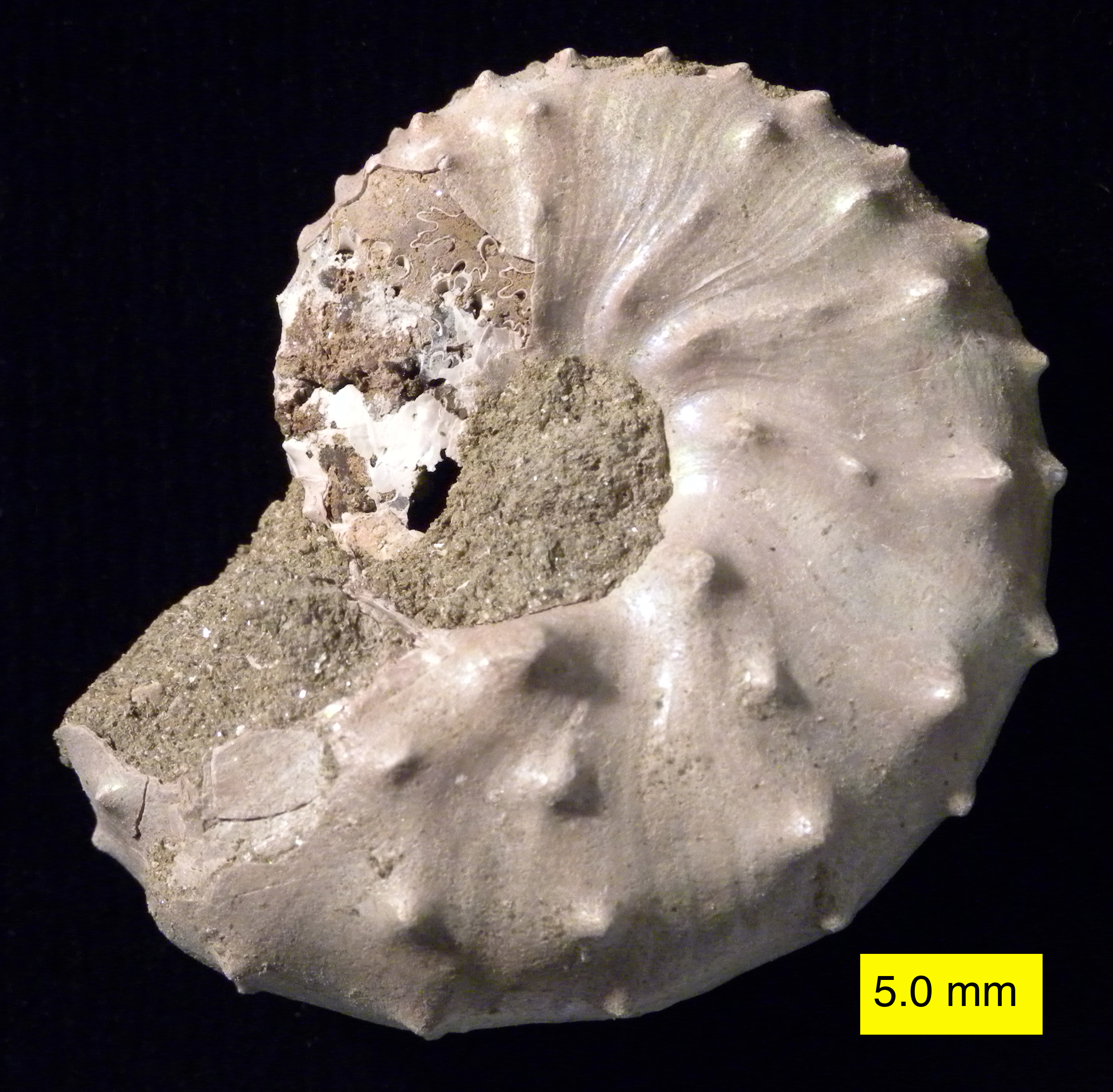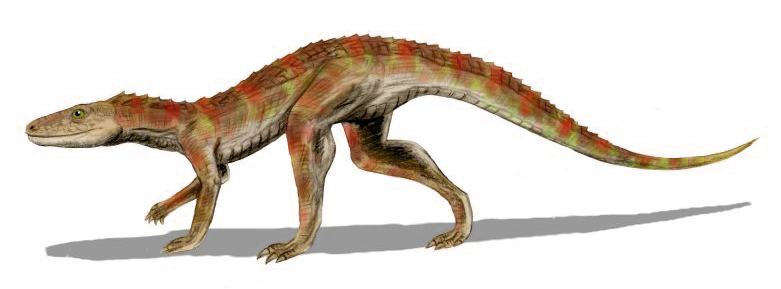|
Eusuchians
Eusuchia is a clade of crocodylomorphs that first appeared in the Early Cretaceous with ''Hylaeochampsa''. Along with Dyrosauridae and Sebecosuchia, they were the only crocodyliformes who survived the K-T extinction. Since the other two clades died out 47 and 11 million years ago respectively, all living crocodilian species are eusuchians, as are many extinct forms. Definition Eusuchia was originally defined by Thomas Henry Huxley in 1875 as an apomorphy-based group, meaning that it was defined by shared characteristics rather than relations. These characteristics include pterygoid-bounded choanae and vertebrae which are procoelous (concave from the front and convex from the back). The possibility that these traits may have been convergently evolved in different groups of neosuchians rather than one lineage spurred some modern paleontologists to revise the group's definition to make it defined solely by relations. In 1999, Christopher Brochu redefined Eusuchia as "the la ... [...More Info...] [...Related Items...] OR: [Wikipedia] [Google] [Baidu] |
Eothoracosaurus
''Eothoracosaurus'' is an extinct monospecific genus of eusuchian crocodylomorphs found in Eastern United States which existed during the Late Cretaceous period. ''Eothoracosaurus'' is considered to belong to an informally named clade called the "thoracosaurs", named after the closely related ''Thoracosaurus''. Thoracosaurs in general were traditionally thought to be related to the modern false gharial, largely because the nasal bones contact the premaxillae, but phylogenetic work starting in the 1990s instead supported affinities within gavialoid exclusive of such forms. Even more recent phylogenetic studies suggest that thoracosaurs might instead be non-crocodilian eusuchians. Discovery and naming Fossils are known from the Ripley Formation in Mississippi and date back to the early Maastrichtian stage of the Late Cretaceous. Some fragmentary material from the Coon Creek Formation of western Tennessee dating back to the late Campanian (slightly older than the specimens from Miss ... [...More Info...] [...Related Items...] OR: [Wikipedia] [Google] [Baidu] |
Thoracosaurus
''Thoracosaurus'' is an extinct genus of eusuchian crocodylomorph which existed during the Late Cretaceous and Early Paleocene in North America and Europe. The taxon had traditionally been thought to be related to the modern false gharial, largely because the nasal bones contact the premaxillae. Phylogenetic work starting in the 1990s instead supported affinities within Gavialoidea exclusive of such forms, although a 2018 tip dating study simultaneously using morphological, molecular ( DNA sequencing), and stratigraphic (fossil age) data suggests that it might have been a non-crocodylian eusuchian. The genus contains the type species ''Thoracosaurus neocesariensis'' in North America, and what is either ''Thoracosaurus isorhynchus'' or ''Thoracosaurus macrorhynchus'' from Europe; a recent review argues that ''T. macrorhynchus'' is a junior synonym of ''T. isorhynchus,'' but it is unclear whether the type of ''T. isorhynchus'' allows differentiation of European and North American ' ... [...More Info...] [...Related Items...] OR: [Wikipedia] [Google] [Baidu] |
Apomorphy
In phylogenetics, an apomorphy (or derived trait) is a novel character or character state that has evolved from its ancestral form (or plesiomorphy). A synapomorphy is an apomorphy shared by two or more taxa and is therefore hypothesized to have evolved in their most recent common ancestor. ) In cladistics, synapomorphy implies homology. Examples of apomorphy are the presence of erect gait, fur, the evolution of three middle ear bones, and mammary glands in mammals but not in other vertebrate animals such as amphibians or reptiles, which have retained their ancestral traits of a sprawling gait and lack of fur. Thus, these derived traits are also synapomorphies of mammals in general as they are not shared by other vertebrate animals. Etymology The word —coined by German entomologist Willi Hennig—is derived from the Ancient Greek words (''sún''), meaning "with, together"; (''apó''), meaning "away from"; and (''morphḗ''), meaning "shape, form". Clade analys ... [...More Info...] [...Related Items...] OR: [Wikipedia] [Google] [Baidu] |
Species
In biology, a species is the basic unit of Taxonomy (biology), classification and a taxonomic rank of an organism, as well as a unit of biodiversity. A species is often defined as the largest group of organisms in which any two individuals of the appropriate sexes or mating types can reproduction, produce Fertility, fertile offspring, typically by sexual reproduction. Other ways of defining species include their karyotype, DNA sequence, morphology (biology), morphology, behaviour or ecological niche. In addition, paleontologists use the concept of the chronospecies since fossil reproduction cannot be examined. The most recent rigorous estimate for the total number of species of eukaryotes is between 8 and 8.7 million. However, only about 14% of these had been described by 2011. All species (except viruses) are given a binomial nomenclature, two-part name, a "binomial". The first part of a binomial is the genus to which the species belongs. The second part is called the specifi ... [...More Info...] [...Related Items...] OR: [Wikipedia] [Google] [Baidu] |
Crocodilia
Crocodilia (or Crocodylia, both ) is an order of mostly large, predatory, semiaquatic reptiles, known as crocodilians. They first appeared 95 million years ago in the Late Cretaceous period ( Cenomanian stage) and are the closest living relatives of birds, as the two groups are the only known survivors of the Archosauria. Members of the order's total group, the clade Pseudosuchia, appeared about 250 million years ago in the Early Triassic period, and diversified during the Mesozoic era. The order Crocodilia includes the true crocodiles (family Crocodylidae), the alligators and caimans (family Alligatoridae), and the gharial and false gharial (family Gavialidae). Although the term 'crocodiles' is sometimes used to refer to all of these, crocodilians is a less ambiguous vernacular term for members of this group. Large, solidly built, lizard-like reptiles, crocodilians have long flattened snouts, laterally compressed tails, and eyes, ears, and nostrils ... [...More Info...] [...Related Items...] OR: [Wikipedia] [Google] [Baidu] |
Cretaceous–Paleogene Extinction Event
The Cretaceous–Paleogene (K–Pg) extinction event (also known as the Cretaceous–Tertiary extinction) was a sudden extinction event, mass extinction of three-quarters of the plant and animal species on Earth, approximately 66 million years ago. With the exception of some ectothermic species such as sea turtles and crocodilians, no tetrapods weighing more than survived. It marked the end of the Cretaceous Period, and with it the Mesozoic era, while heralding the beginning of the Cenozoic era, which continues to this day. In the geologic record, the K–Pg event is marked by a thin layer of sediment called the Cretaceous–Paleogene boundary, K–Pg boundary, which can be found throughout the world in marine and terrestrial rocks. The boundary clay shows unusually high levels of the metal iridium, which is more common in asteroids than in the Earth's crust. As originally proposed in 1980 by a team of scientists led by Luis Walter Alvarez, Luis Alvarez and his son Walter ... [...More Info...] [...Related Items...] OR: [Wikipedia] [Google] [Baidu] |
Crocodyliformes
Crocodyliformes is a clade of crurotarsan archosaurs, the group often traditionally referred to as "crocodilians". They are the first members of Crocodylomorpha to possess many of the features that define later relatives. They are the only pseudosuchians to survive the K-Pg extinction event. In 1988, Michael J. Benton and James M. Clark argued that all traditional names for well-known groups of animals should be restricted to their crown clades, that is, used only for natural groups comprising all living members of any given lineage. This posed a problem for the crocodilians, because the name Crocodylia, while used in various ways by various scientists, had always included not only living crocodilians but many of their extinct ancestors known only from the fossil record.Benton, M.J. and Clark, J.M. (1988). "Archosaur phylogeny and the relationships of the Crocodylia." Pp. 295–338 in Benton, M.J. (ed.), ''The phylogeny and classification of the Tetrapods, volume 1''. Oxfor ... [...More Info...] [...Related Items...] OR: [Wikipedia] [Google] [Baidu] |
Sebecosuchia
Sebecosuchia is an extinct group of mesoeucrocodylian crocodyliforms that includes the families Sebecidae and Baurusuchidae. The group was long thought to have first appeared in the Late Cretaceous with the baurusuchids and become extinct in the Miocene with the last sebecids, but '' Razanandrongobe'' pushes the origin of Sebecosuchia to the Middle Jurassic. Fossils have been found primarily from South America but have also been found in Europe, North Africa, Madagascar, and the Indian subcontinent. History and phylogeny Sebecosuchia was first constructed in 1937 by George Gaylord Simpson.Simpson, G.G. 1937. "New reptiles from the Eocene of South America". ''American Museum Novitates'' 967: 1-20 In 1946 the concept was again used by American paleontologist Edwin Colbert to include '' Sebecus'' and Baurusuchidae. ''Sebecus'', which had been known from South America since 1937, was an unusual crocodyliform with a deep snout and teeth that were ziphodont, or serrated and laterall ... [...More Info...] [...Related Items...] OR: [Wikipedia] [Google] [Baidu] |
Dyrosauridae
Dyrosauridae is a family (biology), family of extinct neosuchian crocodyliforms that lived from the Late Cretaceous (Maastrichtian) to the Eocene. Dyrosaurid fossils are globally distributed, having been found in Africa, Asia, Europe, North America and South America. Over a dozen species are currently known, varying greatly in overall size and cranial shape. A majority were aquatic, some terrestrial and others fully marine (see locomotion below), with species inhabiting both freshwater and marine environments. Ocean-dwelling dyrosaurids were among the few marine reptiles to survive the Cretaceous–Paleogene extinction event. The dyrosaurids were a group of mostly marine, long jawed, crocodile-like quadrupeds up to long. The largest dyrosaurid was probably ''Phosphatosaurus'' estimated at in length. Based on bone tissue evidence, it has been hypothesized that they were slow-growing near-shore marine animals with interlocking closed jaws, able to swim as well as walk on land. Ex ... [...More Info...] [...Related Items...] OR: [Wikipedia] [Google] [Baidu] |
Blackwell Publishing
Wiley-Blackwell is an international scientific, technical, medical, and scholarly publishing business of John Wiley & Sons. It was formed by the merger of John Wiley & Sons Global Scientific, Technical, and Medical business with Blackwell Publishing in 2007.About Wiley-Blackwell John Wiley & Sons, Inc. Wiley-Blackwell is now an imprint that publishes a diverse range of academic and professional fields, including , , physical sciences, |
Hylaeochampsa
''Hylaeochampsa'' is an extinct genus of eusuchian crocodylomorphs. It is known only from a partial skull recovered from Barremian-age rocks of the Lower Cretaceous Vectis Formation (Wealden Group) of the Isle of Wight. This skull, BMNH R 177, is short and wide, with a eusuchian-like palate and inferred enlarged posterior teeth that would have been suitable for crushing.Owen, R. (1874). Monograph on the fossil Reptilia of the Wealden and Purbeck formations. Supplement no. V. Dinosauria (''Iguanodon''). ealden and Purbeck. ''The Palaeontographical Society, London'' 1873:1-18 ''Hylaochampsa'' was described by Richard Owen in 1874, with ''H. vectiana'' as the type species. It may be the same genus as the slightly older '' Heterosuchus'', inferred to have been of similar evolutionary grade, but there is no overlapping material as ''Heterosuchus'' is known only from vertebrae. If the two could be shown to be synonyms, ''Hylaeochampsa'' would have priority because it is the older na ... [...More Info...] [...Related Items...] OR: [Wikipedia] [Google] [Baidu] |
Crocodylomorpha
Crocodylomorpha is a group of pseudosuchian archosaurs that includes the crocodilians and their extinct relatives. They were the only members of Pseudosuchia to survive the end-Triassic extinction. During Mesozoic and early Cenozoic times, crocodylomorphs were far more diverse than they are now. Triassic forms were small, lightly built, active terrestrial animals. The earliest and most primitive crocodylomorphs are represented by " sphenosuchians", a paraphyletic assemblage containing small-bodied forms with elongated limbs that walked upright, which represents the ancestral morphology of Crocodylomorpha. These forms persisted until the end of the Jurassic. During the Jurassic, Crocodylomorphs morphologically diversified into numerous niches, including into the aquatic and marine realms. Evolutionary history When their extinct species and stem group are examined, the crocodylian lineage (clade Pseudosuchia, formerly Crurotarsi) proves to have been a very diverse and adapt ... [...More Info...] [...Related Items...] OR: [Wikipedia] [Google] [Baidu] |





